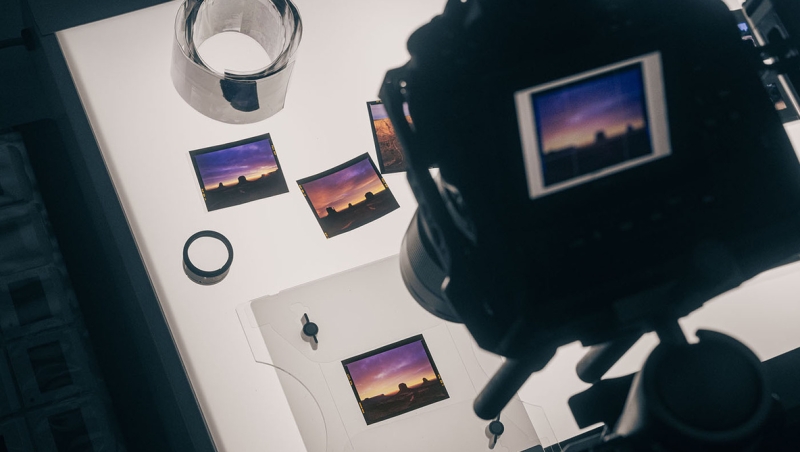Maybe you can relate to this. You have filing cabinets full of negatives and transparencies you shot back in the film days that have remained untouched for decades now. What do you do with them? I’ve tried various scanners over the years, and none have given me the results I want. So I stopped bothering and continued to let them sit in their dark tombs, unloved and forgotten.
A few years ago, I bought a Nikon Z9, with more megapixels than I need. One day, it occurred to me that if I used my 100mm macro lens with it, I should be able to turn a 35mm negative into a very high resolution digital file. So I put some on a lightbox, set up the camera just inches from the box surface, and tried to capture something. But negatives aren’t flat. I couldn’t get a frame-wide focus, the results were terrible, and I gave up. I should add, there was—still is—a really good “pro” solution: get a drum scan made at a pro lab. The only problem is that this is expensive. Depending on the resolution, you can easily pay $30–$60 each. I’ve done this for client work, but for personal photography, I can’t justify it.
Earlier this year, I heard from a man in England named Michael Swift. He’s a semi-retired IT professional with a love of analog photography. He told me he “always loved the appealing tones and organic grain structure in film photography.” I can relate, and he had the same dilemma as me. But he did something about it.
Mike designed a film holder so he could have a flat negative or transparency in order to achieve a perfectly focused digital image from edge to edge. He uses a Pentax K-3 with a 100mm macro or 50mm macro, depending on the film size and format. He has a Raleno PLV-S192 LED light, placing the Myriad film holder on top.
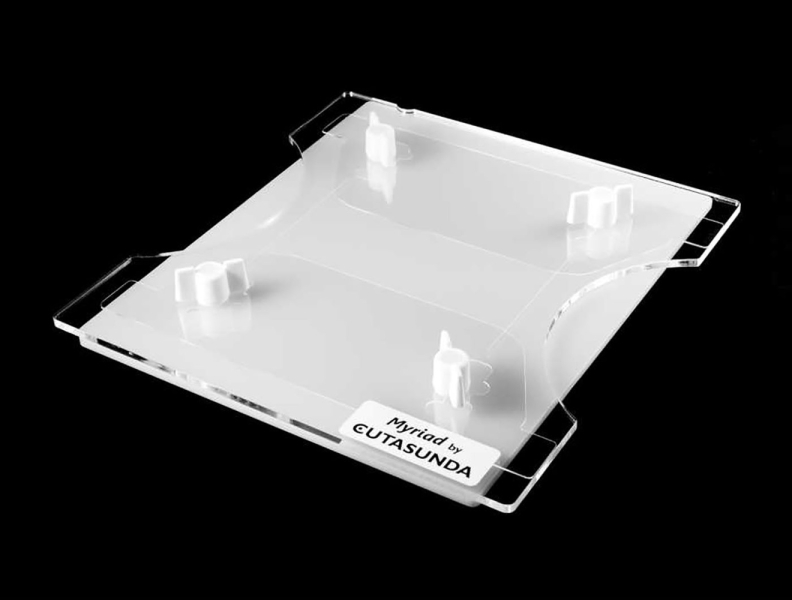
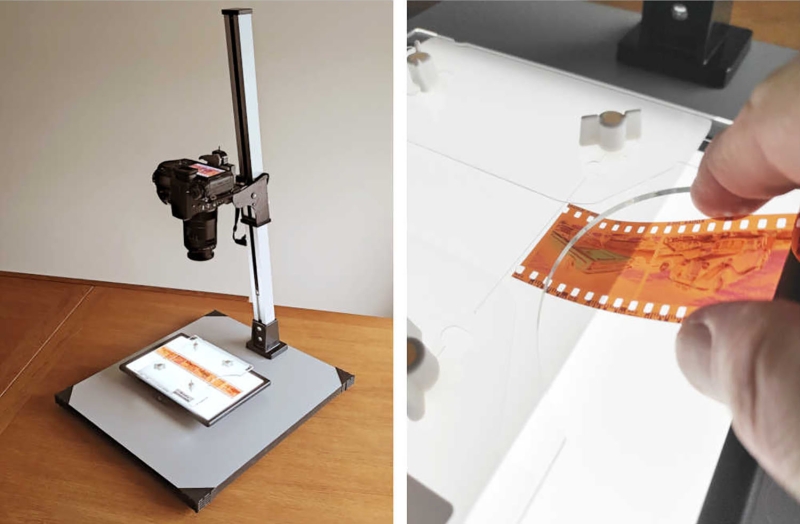
Mike uses a copy stand and places the Myriad on an LED panel.
Myriad by Cutasunda
The Myriad was designed and made fueled by a passion for photography and a desire to create something made entirely in the UK with premium materials. What’s Cutasunda? That’s his brand name. Mike is from Sunderland, in the northeast of England. Sunderland is an ancient settlement whose name means “a land cut asunder.”
The Myriad film holder consists of three layers. The base layer is a diffuser with a finely textured surface to evenly distribute light. The middle layer is an easily adjustable guide that can accommodate every film size from 16mm—including 110, 135, 127, and 120/220. It doesn’t work with a 4×5 size. The transparent top panel has laser-etched markers for perfect alignment, and the entire unit is firmly compressed with nylon thumbscrew fixings.
Mike kindly sent me the Myriad to try. It arrived in a cotton drawstring storage bag with an optical-grade anti-static microfiber cleaning cloth. It’s a simple-looking product, but as I discovered, incredibly useful.
I have many 35mm negative and 120 transparency strips. Adjusting the guide is easy, and I was soon up and running, shooting a frame, and then just pulling the strip along to the next frame. Easy. But then there’s the issue of “scanning” transparencies that had been individually cut and mounted in plastic frames. I needed to remove the thumbscrews and top section of the Myriad, place the transparency, and then pop the top back on. A little more effort, but it worked well. And it was still less fiddly than a film scanner. I can’t think of anything else that allows you to easily “scan” a single 35mm transparency like this.
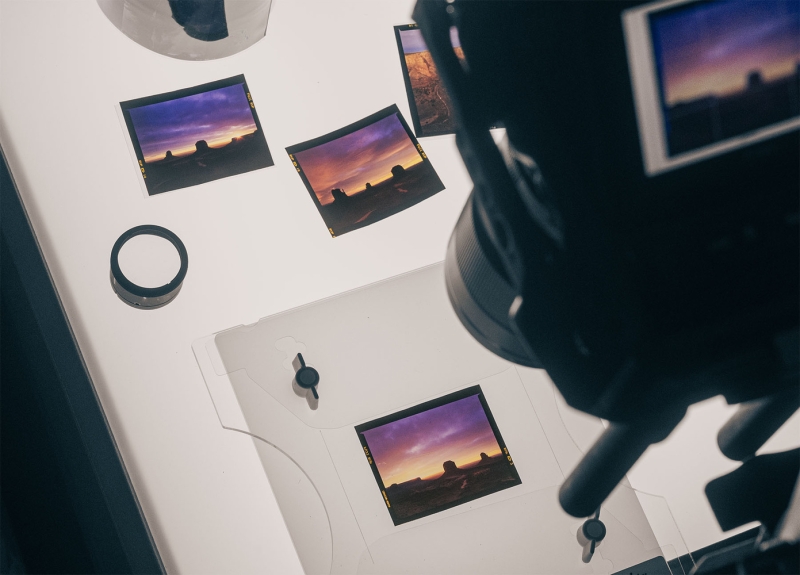
I placed my Myriad on a light box that came from a local hospital, via a charity shop. It works great!
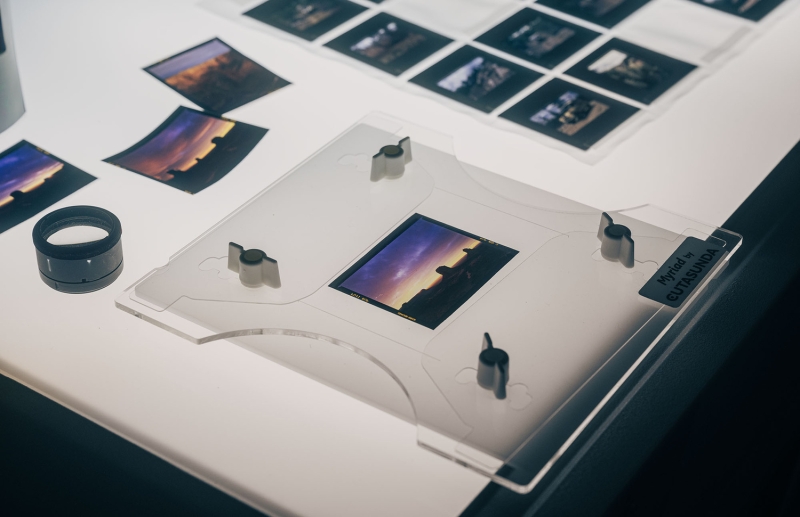
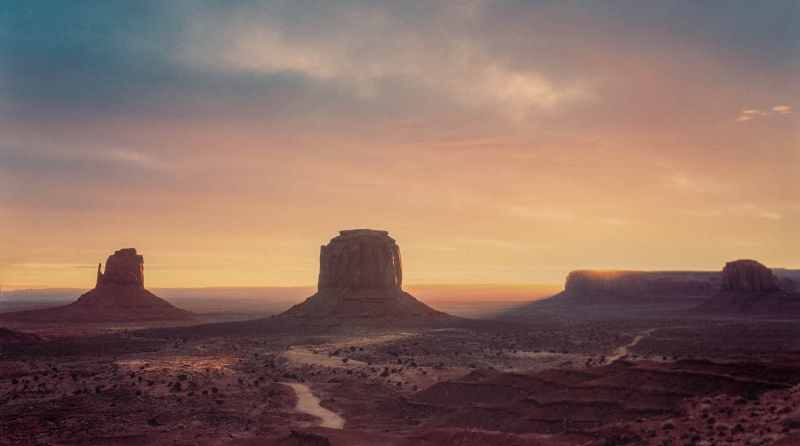
My Setup
I don’t have a copy stand, so I used a tripod. I don’t have an LED light panel, but I found a large X-ray lightbox at a thrift store that the local hospital had donated. They were only asking $30—what a bargain! This works very well, as it’s large enough for me to place the Myriad, and also spread out and inspect negatives and transparencies and line them up. Rubber feet on the film holder base mean no scratches on my lightbox, and it doesn’t slide around. My Nikon produces a 45.7 MP file, and my Laowa 100mm macro can fill the entire frame with an image.
I found I got the best results by turning off all the lights in the room to avoid flare and reflections. Once I have my images on the computer, I open them in Photoshop, and in the case of negatives, invert the image to become a positive. From there I can fine-tune the image and clone out any stray dust that may have crept in. I’ve found the images I’ve scanned have maintained perfect contrast and clarity.
Dust is the biggest issue with reproducing images. The Myriad is basically plastic and can attract dust, but with some care and attention it hasn’t been a problem for me. I’ve discovered never to take the top layer off and place it down on anything other than a microfiber cloth—or lean it on its edge.
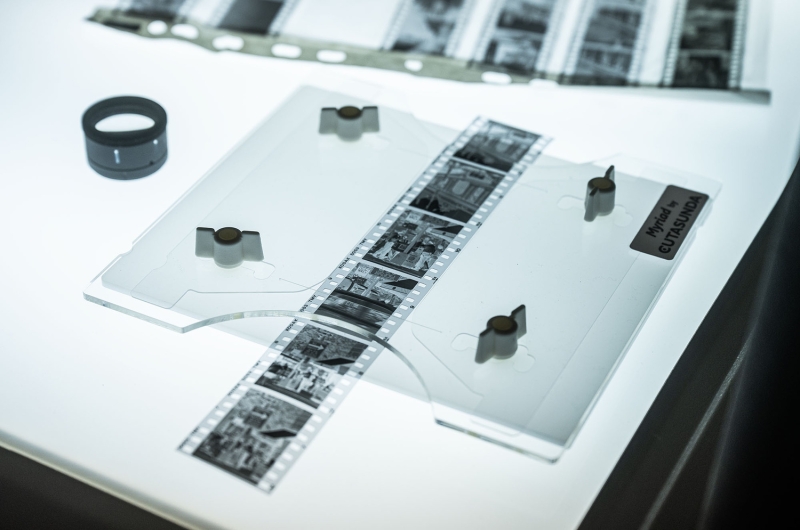
The Myriad performs at its best with a strip of negatives, as toy can quickly shoot and move to the next frame.
Analog and Digital Technology Working Together
Being able to create a high resolution image of a film photo gives me the best of both worlds. I love that I can now share my analog work on a digital media platform. I am also able to prepare a file for large format printing. Printing on film paper in a darkroom is great until you have an image with high dynamic range and need to dodge and burn. I’ve seen the very best—famous—photographers attempt this, but they can rarely get it 100% perfect, and I cringe at a light halo around a face where they’ve burned it to lighten the exposure.
If we do this digitally, we have full control and the results are much better. Printing onto a fine art archival-quality paper can result in a truly organic film-like end result that can be repeated over and over.
Cutasunda’s Myriad Film Holder retails for £99.95. For more information and to purchase, click here.
